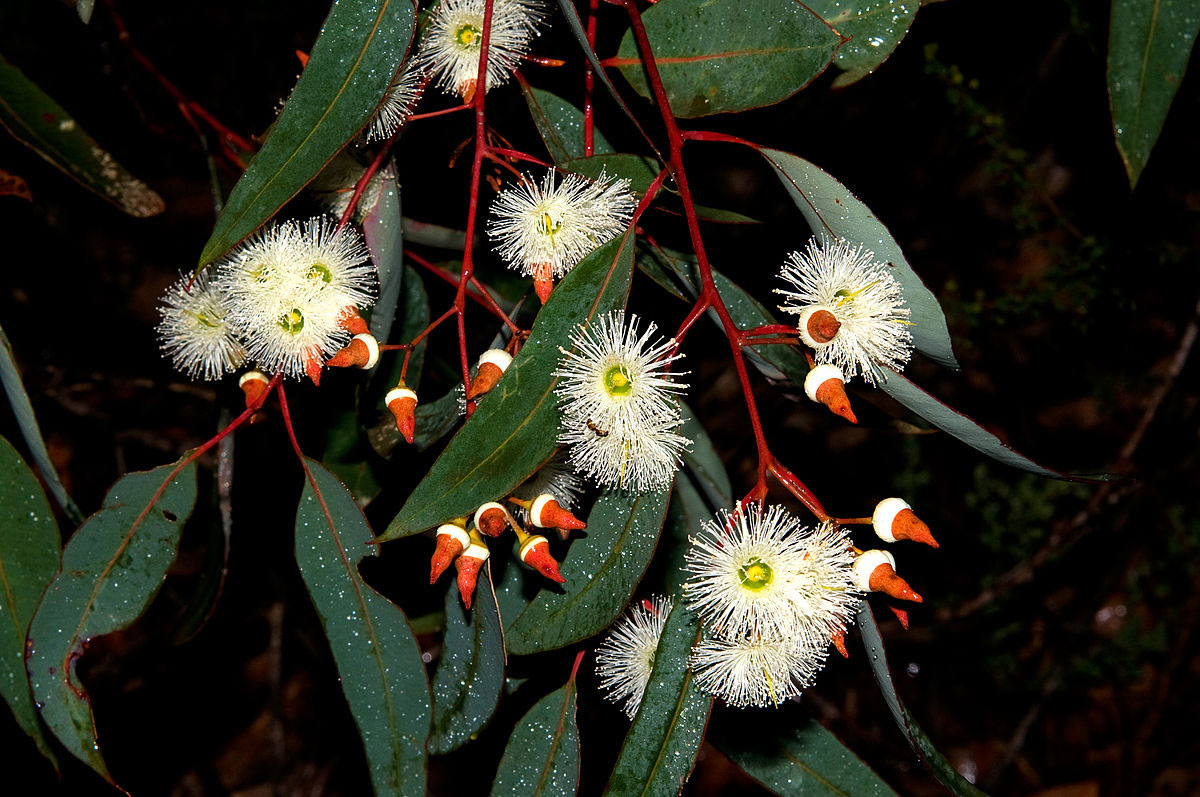Jarrah

Origin: Western Australia
Family: Myrtaceae
Subfamily: Myrtoideae
Tribe: Eucalypteae
Scientific name: Eucalyptus marginata
Folk Names: Swan River mahogany
Indigenous (Noongar) Names: Jarrah
Magical
Element: Earth
Direction: East
Day: Saturday
Planet: Saturn
Zodiac: Capricorn
Associated celebrations: SumSol
Parts used: Leaves, gum, wood
Magical Properties: Health, strength, protection, grounding, longevity, wisdom
Medicinal
Indigenous Medicinal Uses:
- Jarrah gum was used as a mild anaesthetic, and a solution was consumed to assist with diarrhoea and upset stomachs.
- Larger pieces of Jarrah gum were sometimes used as fillings for dental cavities.
Practical
The dark, thick honey produced using jarrah flowers is very popular.
Jarrah timber is highly prized for its heaviness, dark/rich colour, and pest-resistance. Due to its rot resistance, jarrah can be used to make hot tubs.
Indigenous Uses:
- Noongar people considered jarrah bark to be the most effective kind to use as roofing for shelters.
Botanical
Type: Evergreen tree or mallee
Plant size: up to 40mm
Bark: Rough, grey-brown fibrous stringybark, which sheds in long, flat strips
Leaves: Lance-shaped (often curved) leaves, 8-13cm long and 1.5-3cm wide, dark green above and slightly paler below
Flowers: Birak: Conical flowers with cream or pink stamens
Fruit: Woody, almost-spherical fruits, 1-2cm long
Etymology: Marginata is a Latin word meaning “furnished with a border”, noting that, compared to E. robusta “the margin [of the leaves] is more thickened”.
